PRODUCT DESCRIPTION
An Effective Steel Surface Protective Primer
Zinc Rich Epoxy is a specialized protective primer designed for steel surfaces. It forms a durable coating that effectively guards against rust and corrosion when applied. This particular type of primer is known as Zinc Rich Epoxy Polyamide Primer due to its enrichment with zinc metal and the inclusion of polyamide hardeners in its two-component formulation.
The Performance of Zinc-Rich Epoxy in Structural Protection
Unlike conventional paints and epoxies that create impermeable barriers to prevent corrosion, Zinc Rich Epoxy primers provide corrosion protection through an electrolyte process. The primer interacts with the steel surface, resulting in the formation of zinc oxide powder as a protective coating, rather than corroding the steel itself. This unique mechanism significantly extends the service life of steel surfaces, making them more resilient against corrosive elements.
Importance of Surface Maintenance for Moisture and Corrosion Prevention
Investing in high-quality coatings can lead to substantial cost savings by reducing annual corrosion expenses by approximately 25-30%. Without proper coatings, corrosion can have detrimental effects on various mechanical equipment, such as valves, motors, clamps, pumps, switches, and belts. In the infrastructure sector, corrosion incurs an annual cost of $47.9 billion, impacting water, electricity, gas, and other facilities. Up to 25% of corrosion costs can be prevented or mitigated by implementing corrosion prevention measures, such as coatings.
How to Apply Zinc-Rich Epoxy Primer
Before applying the primer, it is essential to thoroughly clean and sandblast the surfaces to be primed. Any surface defects should be carefully identified and addressed. The primer should be mixed in two containers according to the instructions provided in the technical data sheet, ensuring uniform consistency.
Zinc Rich Epoxy primer can be applied using various methods, including brush application, airless spray, or air spray. When using airless spray, it is crucial to maintain the fluid pressure at the spray tip as per the coating manufacturer’s specifications. For brush application, achieving the membrane thickness is recommended, typically ranging from 50 to 75 microns per layer. The selected membrane thickness should align with the surface’s technical specifications.
Insights on Zinc Rich Epoxy
Zinc Rich Epoxy primer contains approximately 90% zinc metal in its dry state. It is suitable for both construction and maintenance projects, particularly in environments prone to corrosion and rust, such as marine structures, petrochemical equipment, bridges, and power plants. This primer comes in various colors, offering both protective and decorative effects to surfaces. It is commonly referred to as Zinc Rich Paint in the market.
Types of Zinc Rich Epoxy
There are two main types of Zinc Rich Epoxy: Organic and Inorganic.
-
Organic Zinc-Rich Epoxy:
This category utilizes organic zinc metal and incorporates resins like epoxy, butyl, and urethane. Organic coatings are easier to apply and provide good coverage. However, their corrosion protection may be slightly lower compared to inorganic coatings. They are often used for repairing mineral coatings and have less resistance to heat and abrasion.
-
Inorganic Zinc Rich Epoxy:
In this type, mineral zinc is used for enrichment, along with silicate adhesives. Inorganic coatings offer superior corrosion protection and possess excellent mechanical properties, impact resistance, scratch resistance, and abrasion resistance. They require meticulous surface preparation before application and exhibit good heat resistance up to 400 degrees Celsius.
What is the best epoxy stainless steel, and what are its features? What is the price of the best Zinc Rich epoxy on the market?
The best Zinc Rich epoxy primer for stainless steel bars in Iran is Zinc Rich Epoxy Primer (EZP™ code). This primer is specifically designed for lining systems that prioritize durability and longevity. It provides strong corrosion protection, making it an ideal choice for various applications.
Buyers often seek a balance between cost and quality when choosing a product. Fortunately, Zinc Rich Epoxy Primer (EZP™ code) offers excellent quality and an attractive price point, making it suitable for diverse needs.
Afzir Company specializes in structural reinforcement and is a reputable Zinc Rich Epoxy Primer supplier. Their experts can provide information about pricing and detailed specifications upon inquiry.
Epoxy primer protection mechanism
The protective mechanism of Zinc Rich epoxy primer involves creating a continuous barrier between the substrate and the corrosive environment when applied as a complete layer. However, suppose the coating is compromised, and the substrate is exposed to a corrosive environment. In that case, the primer initiates a reaction with corrosive agents through sacrificial anodes, delaying the onset of corrosion on the substrate. The level of protection depends on factors such as primer purity, moisture presence, and electrical conductivity between the substrate and zinc particles. The zinc in the primer acts as a cathode on the metal surface, and as the zinc particles transform into zinc oxide, complete metal protection is achieved.
The purchase price of Zinc rich epoxy
The price of Zinc Rich epoxy primer is determined based on the cost per kilogram of Zinc Rich paint. The global market for corrosion-resistant coatings, including epoxy primers, is projected to grow from $6.9 billion in 2020 to $8.9 billion by 2025, with an average annual investment growth rate of 5.3%.
Epoxy primer finds wide application in corrosion protection coatings due to its excellent adhesion, corrosion resistance, and chemical resistance properties. It is commonly used in industrial, coastal, marine, and freshwater environments, including offshore platforms, refineries, steel tanks, petrochemical and power plants, railways, and other industries such as pulp and paper mills. The expansion of the oil and gas market contributes to the growth of the epoxy primer market, particularly in the steel tank industry.
The growth of Zinc rich epoxy in the global market
The global Zinc Rich Organic Epoxy Primer market was valued at $1 million in 2020 and is expected to reach $1 million by the end of 2027, growing with a CAGR between 2021 and 2027. The growth in epoxy primer production and supply is anticipated to lead to price reductions and improvements in equipment lifespan, benefiting the overall primer market.
Key Features
- Ability to curing quickly, in humid or arid environments
- Can be applied with high thickness, without cracking
- Ease of primer application
- Excellent adhesion to the surface (steel surfaces must be sandblasted before applying the primer)
- Suitable for running with standard airless sprays (without the need for special equipment)
- Creates high resistance for all types of surfaces and satisfies all quality requirements (requirements for the primer substrate are not strict, for example, surfaces that cannot be cleaned with sandblasting can be protected with zinc-rich epoxy primer).
- Strong protection against corrosion
- Affordable both in terms of time and economy
- Top coat with different types of coatings such as epoxy, polyurethane, chlorinated rubber
Applications
- Refineries
- Power station
- bridges
- the buildings
- Equipment available in the mines
- Structures adjacent to the sea
Packaging
- 30 kg buckets
Colour
- grey
technical specifications
|
color |
grey |
| Mixing ratio(base : curing agent) |
50:100 |
| Volume solids ratio |
>50% |
| gloss |
matt |
| induction time |
30 min |
| Hard dry at 30 °C |
12 hours |
| Full cure at 30 °C |
7 days |
| Pot life |
6 hours |
- Pursue ongoing professional development through conferences, workshops, and webinars.
- Stay updated with the latest advancements and trends in your field.
- Engage in interdisciplinary projects to broaden your understanding and problem-solving abilities.
- Collaborate with colleagues and participate in team-based initiatives.
- Foster effective communication skills to enhance collaboration and project outcomes.
- Embrace a proactive and innovative mindset to solve challenges creatively.
- Prioritize continuous learning and self-improvement.
- Seek mentorship opportunities to gain valuable insights from experienced professionals.
- Stay connected with professional networks and industry associations.
- Emphasize ethical practices and uphold professional standards.
- Embrace new technologies and tools relevant to your field.
- Maintain a strong foundation of technical knowledge and skills.
- Engage in research and contribute to the advancement of your field.
- Develop strong problem-solving and critical thinking abilities.
- Cultivate leadership skills and seek leadership opportunities.
Furthermore, at Afzir company, we prioritize guiding our customers with the utmost care and knowledge regarding the correct utilization and application of corrosion protection products and providing safety and environmental tips. Our team of experts is readily available to address any inquiries about safety, execution, and environmental concerns. You can access the Safety Data Sheets (SDS) and Material Safety Data Sheets (MSDS) on our website. Detailed technical data sheets and execution guidelines are also available for your reference.
Surface Preparation:
- Ensure the surface is clean and free from contaminants such as grease, paint, and dust.
- Remove any existing coatings or loose particles from the surface before applying Zinc Rich Epoxy.
Mixing the Components:
- Zinc Rich Epoxy is a two-component product. Thoroughly mix Component A and Component B according to the specified ratios mentioned in the product data sheet.
- Mix only the amount of material that can be used within the desired consumption time.
Application:
- Apply the mixed product to the prepared surface using a brush or spraying method.
- If spraying, the product’s high viscosity may require thinning with an appropriate thinner. Avoid excessive dilution, as it can compromise the protective properties of the coating against rust and corrosion.
- Allow at least 24 hours between each layer if multiple coats are necessary.
Drying Time:
- Zinc Rich Epoxy typically hardens within 6 hours. Take this into account when planning the application process.
- Ensure sufficient drying time before subjecting the coated surface to further handling or exposure.
Note: For detailed instructions and safety precautions, please refer to the product data sheet and follow the guidelines provided by the manufacturer.
First stage (surface preparation)
The surface must be free of any contaminants such as grease, paint, dust, etc. before applying Zinc Rich Epoxy.
Second stage (composition of materials)
This product is two-component. Therefore, component A and component B must be combined according to the desired consumption and the ratios specified in the product data sheet.
Third stage (implementation)
After combining the product, it can be applied to the desired surface by using a brush or by spraying method. Note that this product has a high viscosity, so to apply it using a spray, a thinner can be used to dilute it. Note that the solution should not be diluted too much as it loses its ability to protect the surface against rust and corrosion. If it is necessary to apply several layers of epoxy zinc rich, a time interval of at least 24 hours must be observed between the application of each layer.
Note: This product hardens in 6 hours. Therefore, the time frame should be considered when applying zinc-rich epoxy.
technical documents
Photo Gallery
Technical documentation request
Frequently Asked Questions
What is Zinc Rich Epoxy and why is it called that?
Zinc Rich Epoxy or Zinc Rich Paint (known in the market as Zinc Rich Paint) is a coating that is impregnated on steel surfaces and acts like stainless steel (of course with much greater efficiency) and finally with a steel member. (Meaning rebar) is buried in concrete; This type of epoxy is enriched with zinc metal.
What is the use of Zinc Rich Epoxy?
Zinc Reach epoxy paint is suitable for industrial, coastal, marine and freshwater environments. Commonly used for shore platforms, bridges, refineries, steel tanks and petrochemicals and power plants, railways and other applications (pulp and paper mills, etc.).
Zinc-enriched epoxy in what colors?
Zinc Rich Epoxy Primer can be white, blue, yellow, gray, orange, and so on.
How many models are rich in epoxy paint?
Zinc-rich or organic paints composed of epoxies, chlorinated hydrocarbons and other polymers, or inorganic based on organic alkyl silicates.
What are the types of Zinc Rich Epoxies?
Zinc Rich Epoxy is available in both organic (organic matter) and inorganic (mineral) forms.
Is Organic Rich Zinc Epoxy Better or Mineral Rich Zinc?
Mineral zinc epoxy has a higher resistance to abrasion and corrosion, and also withstands heat up to a temperature of 400 ° C, but organic epoxy zinc Rich is easier to apply but has less warp.
What is the difference between organic zinc-rich epoxy and inorganic zinc-rich zinc?
Organic epoxy zinc uses organic metal-based zinc, while mineral zinc epoxy uses mined zinc; Butyl and urethane resins are used for organic Zinc Rich epoxy and carboxylate adhesives are used for mineral Zinc Rich.
How to apply Zinc Rich Epoxy on surfaces?
This coating can be applied with a brush, airless spray or air spray. For airless spray, the fluid pressure at the spray tip must be maintained in accordance with the coating manufacturer's specifications. In the case of brush use, the recommended film thickness should be maintained at 50 to 75 microns per layer.
Does the primer stop rusting?
The term rust inhibitor is commonly used to describe primers that contain zinc or zinc phosphate. Forms a rich primer on a sacrificial layer on a metal substrate. Zinc is more reactive than iron and in the presence of moisture, zinc oxide forms a sacrifice and prevents moisture and air from reaching the metal below.



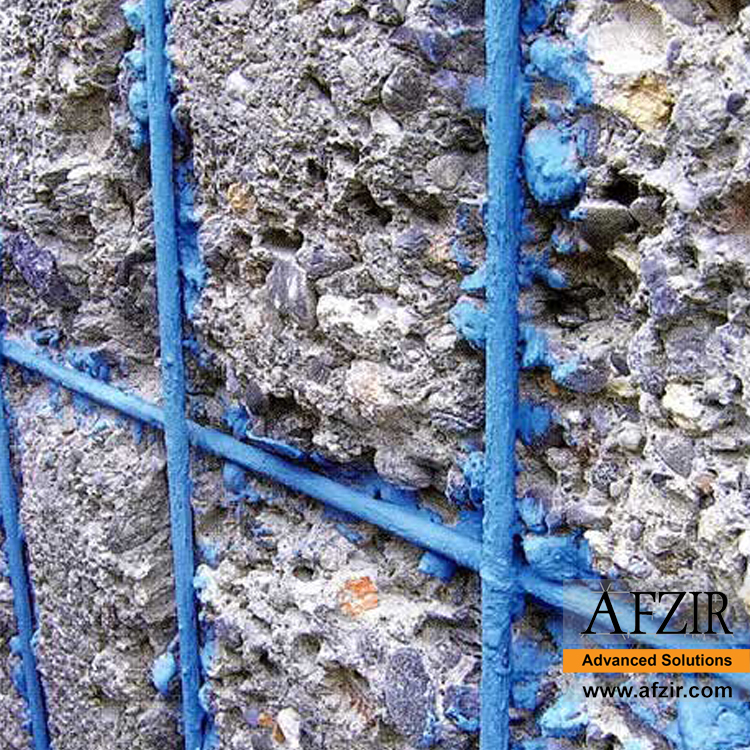


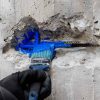
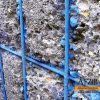

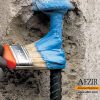
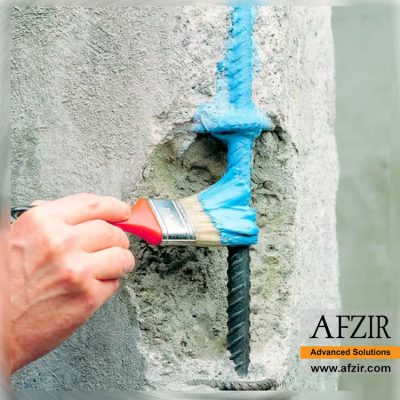

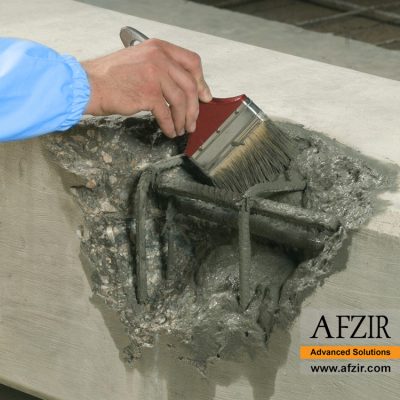





Be the first to review “Epoxy Zinc Rich Primer”